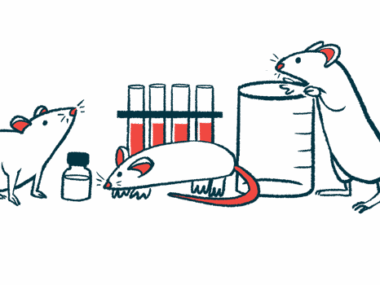Noninvasive imaging may spot early muscle damage in LOPD
Advanced test detects glycogen buildup before symptoms appear
Written by |

The buildup of the complex sugar glycogen, the main cause of muscle damage in late-onset Pompe disease (LOPD), can be detected in people with the condition long before visible symptoms appear, researchers in Denmark found.
Using an advanced imaging technique capable of measuring glycogen inside muscles —a test that would otherwise have required a biopsy — the researchers found that muscles most likely to deteriorate early, such as those in the lower back and hamstrings, had higher glycogen levels than in healthy volunteers. Muscles affected later in the disease had glycogen levels similar to those of healthy peers.
“Our results point to a potential role of high glycogen levels for the later development of weakness and muscle wasting in late-onset Pompe disease,” the researchers wrote, adding that if confirmed in future studies, this noninvasive approach could help detect early muscle changes and monitor treatment effects before symptoms appear.
The study, “Quantification of muscle glycogen distribution in Pompe disease using 7 Tesla 13C NMR spectroscopy,” was published as a short report in the Journal of Neurology, Neurosurgery and Psychiatry.
Glycogen differences
In Pompe disease, a deficiency of the enzyme acid alpha-glucosidase (GAA), which is needed to break down glycogen, causes the sugar to accumulate within muscle cells, damaging them and eventually leading to their death. As the muscle fibers deteriorate, they are gradually replaced by fat tissue — a process that marks irreversible muscle wasting — and ultimately leads to the progressive muscle weakness that is a hallmark Pompe symptom.
In LOPD, which includes all cases where symptoms appear after the first year of life, this typically begins in the lower back and hamstrings, while the front thigh muscles are affected later, and the lower leg muscles usually remain preserved until later stages of the disease.
“This characteristic pattern of muscle degeneration is still to be explained but could relate to differences in how glycogen is deposited in the different muscles,” the researchers wrote.
They set out to measure glycogen levels in the muscles of people with LOPD to understand whether glycogen buildup occurs before muscle wasting begins in muscles prone to early fat replacement.
Normally, this kind of analysis would require a muscle biopsy, but the team used an advanced imaging method that allowed them to measure glycogen levels directly in muscle tissue without the need for an invasive procedure.
The method, known as carbon-13 magnetic resonance spectroscopy (¹³C-MRS), operates by tracking carbon-13 particles that naturally occur within glycogen molecules and detecting their magnetic signals with a high-powered MRI scanner.
Eleven people with LOPD and 16 healthy volunteers serving as controls were examined once at the Danish Research Center for Magnetic Resonance from December 2021 to January 2023.
Participants ranged in age from 19 to 44, with a mean age of 31.3 for patients and 27.3 for controls. A slightly higher proportion of women was present in both groups, and their body mass index (a measure of body fat based on height and weight) was comparable.
Most LOPD patients were only mildly affected, though three showed clear signs of increased fat replacement in the lower back muscles.
Glycogen levels were significantly higher in several muscle groups in people with Pompe disease compared with healthy controls: about 2.2 times higher in the lower back muscles, 1.8 times higher in the hamstrings, and, to a lesser extent but still significant, 1.4 times higher in the front thigh muscles.
No difference in glycogen content was observed in the calf muscles between the two groups.
“Muscles with high glycogen levels are the same that are known to be prone to early replacement by fat in Pompe disease,” the researchers wrote. This points to a potential role for glycogen buildup in “the later development of weakness and muscle wasting in late-onset Pompe disease,” they wrote.
According to the researchers, the excess glycogen may physically crowd or displace the normal muscle structure, pushing the fibers apart and making them more fragile.
Another possibility is that the buildup of glycogen activates a stress process known as autophagy, a form of cellular self-eating in which cells recycle damaged parts, which can gradually damage muscle tissue over time.
“MRS measures of glycogen can potentially be used as a biomarker and early predictor of muscle damage in late-onset Pompe disease,” the team wrote. If confirmed in future longitudinal studies that track patients over time, muscle ¹³C-MRS could become a key tool for assessing treatment effects in clinical trials, they said.






